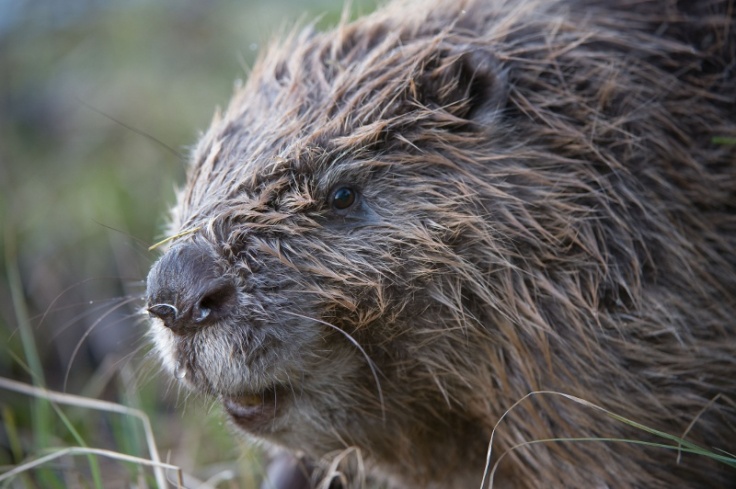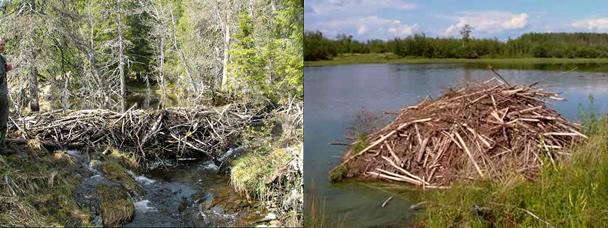
Their Plight
Beavers haven’t always had the easiest of times in Wales; despite once being widespread across Wales the Eurasian beaver (Castor fiber) found itself the victim of hunters seeking their fur, meat and scent organs. In a comparison with examples such as Eurasian badgers (Meles Meles) or the red fox (Vulpes vulpes) which are prosecuted for being pests and apparently aiding in the spread of Bovine Tuberculosis, beavers were never considered problem species despite the excessive hunting.
Fast forward ~500 years and efforts to bring the beaver back to Wales have been in effect since 2005, 13 years and counting. The Welsh Beaver Project has been investigating the feasibility of bringing these animals back including for the possibility of increased tourism in the country.
About Beavers
Beaver are primarily nocturnal creatures with an affinity for aquatic habitats, usually only active within 20m of the waters edge. They are the largest rodents in Europe reaching up to 140cm in length, 20kg in weight and they can live for ~10 years in the wild. Despite living in aquatic environments the beaver does not take advantage of the abundance of fish due to their exclusively herbivorous diets; instead throughout the spring and summer months they prefer to feed on grasses and herbaceous plant material. They shift their diets to tree bark and woody plant materials, with a particular craving for aspen and poplar and tend to avoid conifer during Autumn and Winter. Stores of woody vegetation are gathered at the bottom of pools to ensure winter supplies of food.
You will find beavers living in small family groups of between 3 – 5 individuals on slow moving rivers and streams, lakes or in beaver lodges that they construct out of sticks and mud within dam ponds. Beaver will have anywhere between two and five young, called ‘kits’, each year which will move on and leave the parents in its second year.
Despite being well known for building dams, it is not the preferred behaviour due to the intense energy requirements of doing so. In fact, they are only usually constructed when the better quality habitat has already been occupied and the area of choice does not support burrows. Dams are created from tree branches which get piled across shallow areas of water (>0.7m in depth, usually). These dams are frequently breached and do not create barriers preventing aquatic life to pass through. Beaver lodges contain aquatic entrances and can be taken over by other sympatric species.

Why Bring Them Back?
These incredible animals are considered keystone species and ecosystem engineer; they restore wetlands and enhance riparian habitats. The dam ponds created after dam construction seem like they would be a detriment to the ecosystem but this is far from the truth!
These ponds will provide the beaver with food and protection, these dam ponds actually encourage aquatic vegetation to grow, encouraging invertebrates in which in turn only encourages increased biodiversity and increases numbers of otter, water vole, amphibians and dragonfly. Additionally, the coppicing of trees which many consider a negative only works to increase habitat diversity with reduced canopy allowing more light to the ground which benefits several bird species, among others.
It is also said that fishers dislike beavers despite the fact that fish numbers increase as a result of the changed water chemistry and increased abundance of prey such as invertebrates.
Challenges to Re-Introduction
Beavers are not perfect and can sometimes require management; including unwanted tree felling, damage to crops and dam construction in unwanted locations. It is worth noting, however, that beavers have been successfully reintroduced into the wild of over 25 European countries without and major issues or reversals.
All beaver activity is within 100m, with the majority within 20m of water. Despite the ability to damage crops if agricultural norms would change and leave suitable borders from farm field edge and rivers or streams to reduce risk of beavers impacting crops and installing electric fences to protect crops at risk of damage. As for tree damage, it is not unheard of, but The Norwegian Forest Owners Association considered damages from beaver minimal and not worth implementing insurance policies. It is worth remembering that beaver dams, and ponds, are manageable with water level control devices that keep habitat suitable for beaver and water levels at ideals for us. As mentioned borders from the waters’ edge and electric fencing can be employed and if things escalate: removal or lethal controls can be implemented.
Where to Release Them
Beaver have had 161 reintroductions in Europe since the early 1920’s, and from this we know that the initial ten years’ post release the population grows slowly before a rapid increase to secure all suitable habitat. It can take up to 40 years to reach a stage where populations stabilise. Due to the reliance on water, beavers are contained close by and so their dispersal can be planned.
Wales possesses abundant suitable habitat for beaver including Big Pool Wood and The Spinnies / Aberogwen which are both nature reserves that are being considered for beaver reintroduction to aid in habitat restoration and management.
Conclusion
Adrian provided a clear and descriptive talk on beavers and the reintroduction programme during a Bangor University Zoological Society talk and really managed to enthuse the room on beavers and their right to be reintroduced.
Conservation is a key interested, I feel, in every naturalist and the prospect of being able to contribute and assist to projects such as these so local to where I’m living, including the potential for reintroduction at a nature reserve I frequent in The Spinnies. The North Wales Wildlife Trust provide excellent volunteering opportunities for all and it is well worth the time and effort to get involved.
Alternatively, due to the intense requirement for funding, those that wish to see beaver return after so long away can opt to donate to the cause and support the Welsh Beaver Project on their just giving page.
I personally really hope I’m surprised on a trip to The Spinnies with the sight of such a wonderful species that definitely deserves a chance at reintroduction given all the benefits it brings.


Leave a comment